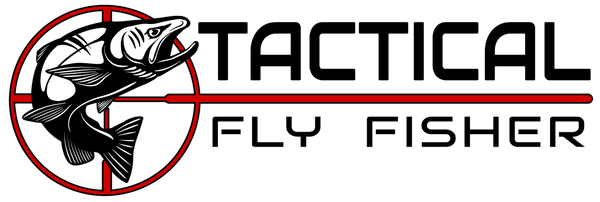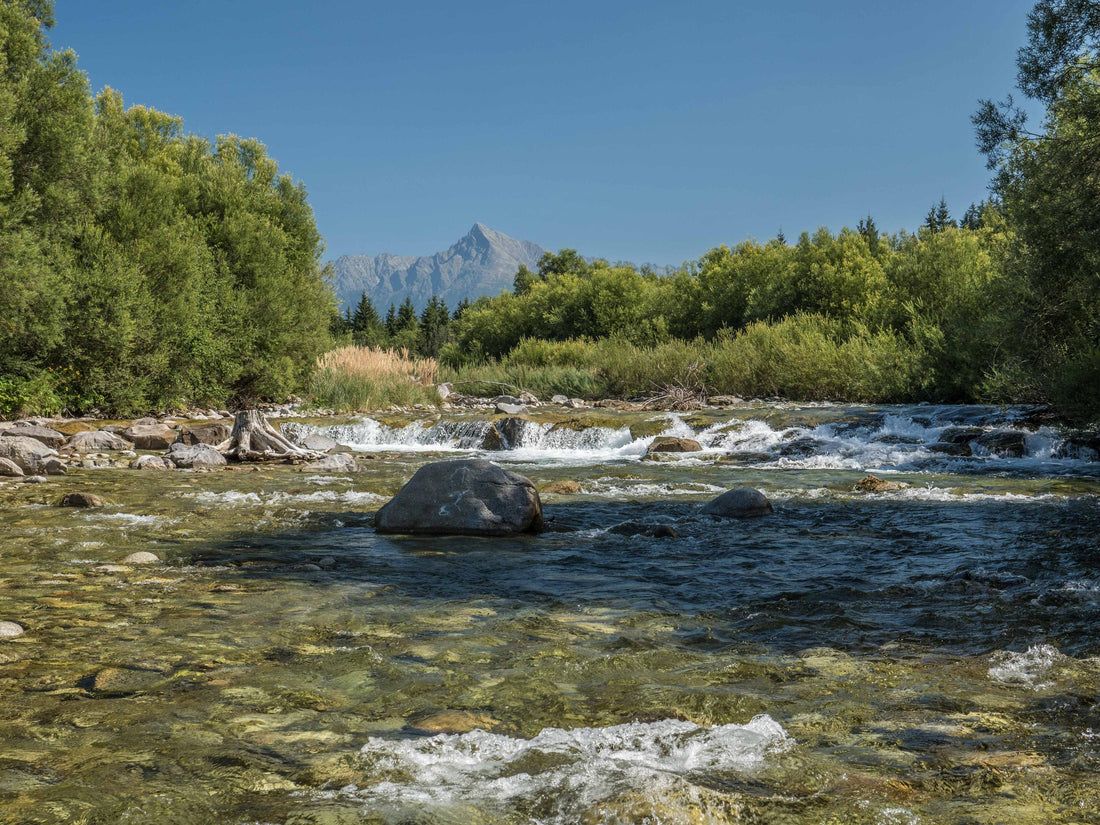
Fly Fishing Team USA member Josh Graffam fishing the upper Bela River on our first day of practice.
In this installment, I’ll take you through my second session during the 2017 World Championships in Slovakia.
Session 2 Bela River:
After a mediocre start on the Orava River I was looking forward to a change of pace on the Bela River in my second session. The Bela is a much smaller river and apparently has the clearest water in Slovakia. Despite that clarity, it was pretty much impossible to spot fish in the river as they were very well camouflaged and/or just not large enough to be easily seen. I drew beat 26 which was on the lower part of the river running through a town. This area was dominated by grayling with a few brown trout while our guide suggested that the upper beats would be mostly populated with brown trout and few grayling. The lower stretch was channelized, like pretty much all the rivers in the tournament, so holding water was not as prevalent as it could have been. Though my beat was fairly long, I only had three areas I thought might hold fish as the other water was shallow and swift without any large substrate to slow the current.
I started at a run in the middle of my beat. It had swift current on the river right side but a slightly softer river left side. I thought this would be the best part of the beat and I expected to get a good proportion of my fish from the run so I wanted to start there first and return at the end of the session after I had rested the water. I fished it very slowly and methodically on my first pass through beginning with dry dropper to capture any suspended fish and then changing to nymphs to get the deeper residents. After a lot of pattern changes, weight changes, and angle changes I only had one small grayling and a brown trout to show for it. The brown trout came from among the rocks on the far bank. Only the grayling came along the slower deep seam where I expected most of my fish. After 45 minutes in this run alone, I was trying not to sweat the fact that I only had two fish on the board.

The run I started on with the softer water evident on the near (river left) bank. The dry fly run with the soft river right side water is seen just upstream.
I moved up to the run above hoping for a change in catch rate. The run made a right-hand turn and had very little structure. Most of it was ripping fast with no chance of holding fish but along the right bank there was a knife edge seam with some soft water. The issue was that the seam was boiling and the softer water was only 10-15” deep. However, I knew from the other rivers that the grayling weren’t afraid of sitting in shallow water. I crawled up the soft bank making upstream casts with a CDC ant on a long dry fly leader. The drift required a reach cast out into the river to align the leader and fly in the narrow seam of water that was heading in the same direction at the same speed. The problem was that this brought the leader directly parallel to the fish. Grayling are already hard for me to hook on dries since they have sub-terminal mouths and their rise speed and form is different from what I’m used to with trout. I had quite a few grayling eat my dry fly in the spot but my hookup ratio was only around 50%. With the leader parallel to the fish, several times I watched their noses bump the tippet before taking the fly which did not allow them to get the fly in their mouth. I wish I could have presented the fly at more of an angle or quartering downstream but the unique currents in the area didn’t allow it. I was at least able to land three fish from this spot, which required a fun crossing through some fast current to reach my controller.

The dry fly run with the soft water where I caught my fish on the river right side.
At this point I was about an hour and 15 minutes into my session and near the top of my beat. I sprinted the path to the bottom of my beat where the locals had built a bit of a homemade weir with cobblestones. I normally detest the seemingly irresistible draw for we humans to leave our artificial mark on a river but at least this creation backed up enough water to slow the current and provide a cushion for the fish to sit it. Maybe they could have built a couple more weirs for me upstream? :)
The water on the river left bank was slow and progressively became faster to the far side of the run where the weir only stretched about 2/3 of the way across the channel. I planned to work a progression of dry, dry dropper, and nymph rigs to cover from shallow to deep in both a lateral and vertical perspective. A few casts in a grayling ate my ant and I quickly put it in my net and on the board. I had no other rises however so I used my dry dropper rig with a heavy poly post Klinkhammer and a Duracell nymph as the dropper. Several larger grayling from the near 1/3 of the river came to the nymph, including a lovely 41 cm fish that took me over the weir and put up a significant fight on the 7x tippet that connected us. On the far part of the weir the current was deep and fast enough that I couldn’t raise any fish to the dry dropper but the nymph rig, consisting of a Duracell on the point and a Soft Hackle Carrot variant on the dropper, accounted for several more fish. One nice grayling originated from a bit of still heavy but softer water under a bush on the far bank, which required a bow and arrow cast to reach.

The weir run at the bottom of my beat.
After fishing the weir, there was about an hour in the session. There was a long high gradient canal like section between the weir and the run I had started at upstream. I didn’t expect much in this stretch but my teammate Pat Weiss had caught quite a few trout around bankside rocks during practice so I went hunting for structure. I put casts tight to any rock that had a slight depression or shadow under it on my way upstream. I probably covered seven or eight small sized boulders. Three of them looked like decent possibilities and I landed a brown trout from under one and missed another fish under a second that gave me a terribly subtle take. Nonetheless, I had one more fish on the board and I went back to the run I started on with a plan to fish it, and the dry fly run above, one more time before returning to end on the weir run. Unfortunately, the run again disproved my initial expectations and I did not catch any fish on my second time through.

The long shallow and swift section between runs in my beat. The two brown trout I hooked here came from rocks under trees on the river left bank (right side of the photo).
When I returned to the dry fly run, I had a couple more halfhearted takes to the ant in the lower part of the seam. I switched to a parachute mahogany spinner that had been successful for us during practice. Several fish rose to it and I netted one more from the run. I then made the long dash to the bottom of the beat again with about 15 minutes remaining.
I went straight to the dry dropper the second time through the weir run. There was a pocket below the weir that I hadn’t fished the first time through because I had dashed into it to net a fish earlier. A nice grayling was kind enough to eat my Klinkhammer and it made its way into my net. I decided to take a different drift approach to the weir on the second time through and make a few casts from below to offer a different angle to the fish. One more came to the dry dropper this way and it was a nice brown trout at 36 cm. With a couple of minutes left I repositioned to the side again and put the nymph rig through the water on the far side of the weir. One more grayling came to net to end with 14 fish and a third place in the session.
I left the session a bit disappointed with my lack of success in the first run I fished and the problems with hooking grayling on dries in the top run. However, other sessions on the beat in the tournament produced 10th, 19th, 19th, and 29th place finishes so in retrospect I feel I fished the beat pretty well. Because of the smaller size of the river, the challenge of locating unfamiliar grayling was diminished compared to the larger rivers and I was able to fish the river similarly to how I would cover the smaller rivers I’ve grown up on. This likely helped my finish as it did in the next session on the Poprad River as well.

A nice grayling I caught during our practice days.

